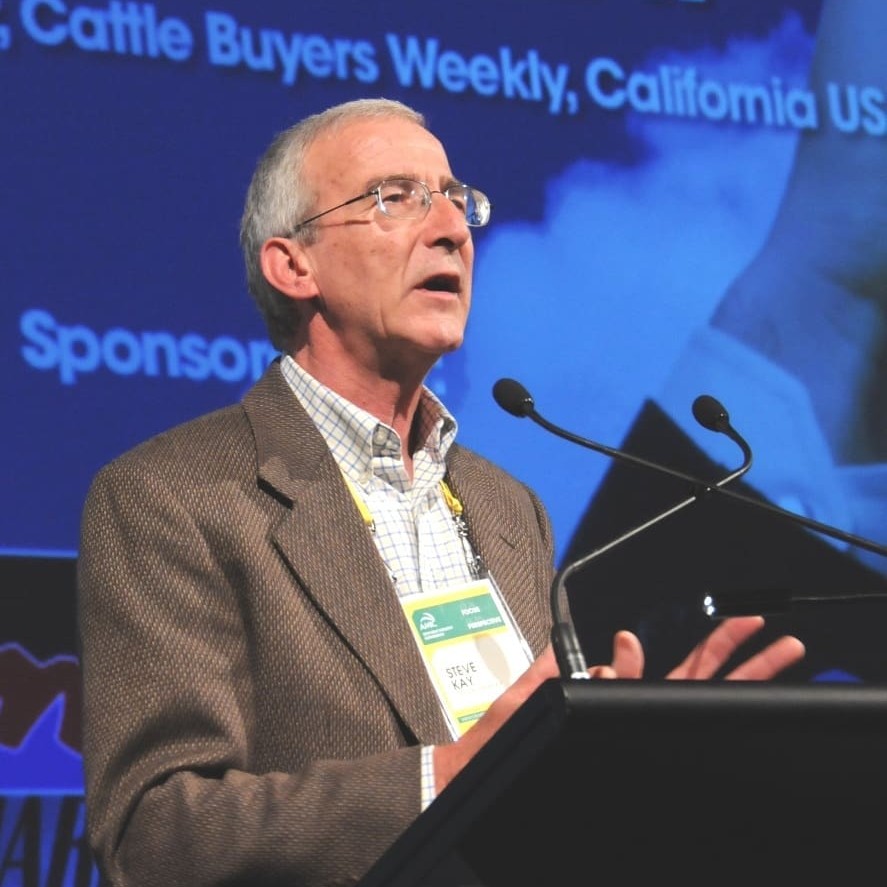A monthly column by US Cattle Buyer's Weekly publisher, Steve Kay
 Beware and be aware are three simple words that look alike but have totally different meaning.
Beware and be aware are three simple words that look alike but have totally different meaning.
Both phrases sum up evolving industry attitudes as to how to deal with the mainstream and now the social media.
Unfortunately, the evolution in both Australia and the U.S. has come only after media-related crises that, respectively, halted a vitally important live cattle trade to Indonesia and nearly put one of the world’s most innovative beef companies out of business.
Who can forget the graphic footage of the inhumane slaughter of Australian cattle in Indonesia aired on ABC’s Four Corners program on May 30, 2011?
You all know the outrage that followed and how a $300 million annual business was nearly lost.
My point in mentioning the crisis is that it could have been avoided. The Australian government ignored written concerns two years earlier from the RSPCA about the welfare of cattle exported to Indonesia. It also ignored a report six months later that revealed serious animal welfare issues at Indonesian plants. The industry in turn appeared to leave it to the government to resolve the crisis.
Hindsight is wonderful but what if the government had acted months earlier, summoned the industry and said that it needed to enact an enhanced certified animal welfare program for cattle exports to Indonesia.
Instead, the program came into effect in July, after the crisis had shut down the live trade. The financial catastrophe for many cattle producers and companies could have been avoided had the industry been proactive instead of reactive in dealing with the issue.
Astonishingly, a similar media-driven crisis was waiting to play out in the U.S. even as the Australian live cattle trade to Indonesia began to recover. The downfall of lean finely textured beef (LFTB) in the spring of 2013 is another case study of inaction in the face of evidence that both the mainstream and social media had beef in its sights.
Here are a few essential facts. LFTB is lean beef extracted from fatty trimmings from grain-fed steers and heifers. South Dakota-based company Beef Products, Inc. developed the process in 1980 and USDA approved it in 1993. In 2001 USDA approved BPI’s use of ammonium hydroxide (in gas form) to reduce pathogens in LFTB. USDA later began using LFTB in its national school lunch program. In 2002, a USDA microbiologist toured a BPI plant and later, in an email to a colleague, coined the infamous phrase “pink slime.”
The phrase appeared occasionally in stories about BPI over the next eight years. Then in April 2011, the ABC TV network aired a video clip showing British chef Jamie Oliver decrying LFTB and pouring liquid ammonia on beef scraps in front of a live audience. The “yuck” factor was now well and truly established.
The way the Oliver clip went viral on the social media no doubt gave ABC the motivation to pursue LFTB further. It bided its time but on March 7, 2012, it aired the first of eight nightly news stories about LFTB. Never mind that LFTB is a perfectly legitimate, safe and wholesome beef item. Never mind that no illnesses or deaths have even been traced to it. ABC’s series trashed LFTB and forced BPI to suspend operations at three of its four plants. The plants remain closed today.
How this happened and why the story got so big is highly instructive as to how to anticipate and use the social media. LFTB was unknown and was unlabelled in ground beef. The term “pink slime” was sexy and had the “ick” factor, as did the use of a chemical. Oliver gave it star power. Texas blogger Bettina Siegel (calling her blog Lunch Tray) the day before the first ABC story collected 250,000 signatures online to force LFTB out of the school lunch program. In addition, ABC had an activist journalist who wouldn’t let go of the story.
In turn, BPI, the industry and USDA were fatally slow to respond. BPI was blinded by its belief in its product. The industry thought it was a company issue and neither responded publicly to the Oliver video. A massive response then might have ended ABC’s interest in LFTB. Even after ABC’s first news story, the industry failed to have a press conference the next morning. ABC and the social media controlled the story and BPI and the industry never did.
The lessons learned are numerous. The most important are: when a story breaks, there is no time to wait. Err on the side of action. In fact, act before the crisis emerges. Dialogue and transparency are essential. It’s no longer an option to think an issue will not blow up in one’s face. Bloggers on the social media have seen to that.
Another lesson is to monitor the social media and be part of it. Social media programs must be an essential part of an industry’s communication strategy.
One final thought: if there’s anything about your operation or industry you don’t want to show the public (apart from slaughtering an animal perhaps), then you shouldn’t be doing it.
- Steve Kay presnted on the challenges faced by the beef industry in social media during the recent AMIC Australian processor conference.
